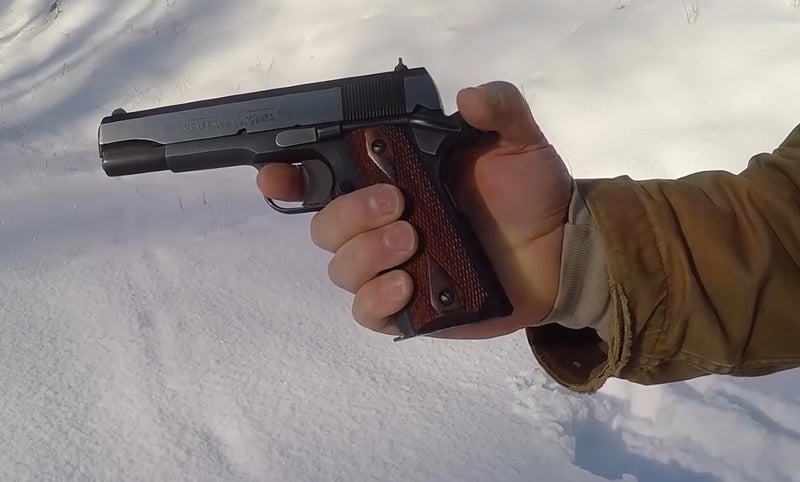The Most Common Types of Negligent Discharge
Russ Chastain 03.04.20

In this video, Paul Harrell talks about negligent discharges, you know, with firearms. And although we would all prefer if it had never happened to us, the fact is that no matter how good you are or how much practice you have, chances are very good that most gun people will fire a gun unintentionally — negligently — before their time on Earth is done.
The key to safety in those situations is muzzle discipline; treat every gun as if it may go off at any time, thus do not point the muzzle at anything you are not willing to shoot.
Paul describes the most common types of negligent discharge and how to avoid them.
Up front, some definitions.
- Accidental discharge: When your gun is fired when you didn’t want it to.
- Negligent discharge: When your gun is fired when you didn’t want it to — because of something you did wrong.
Paul’s idea of the most common types and causes of negligent discharges include:
- Failure to properly engage a manual safety.
- Failure to properly manipulate an exposed hammer.
- Failure to keep track of how many rounds have been fired from a revolver.
- Failure to remember which way a revolver cylinder rotates when you partially load a revolver.
- Failure to remove a round from the chamber of a semi-auto pistol.
- Unintentionally chambering another round when you remove the round from the chamber of a semi-auto pistol.
- Failure to check the chamber of ANY type of firearm.
Safety is up to you and everyone who handles any firearm, and I try to be pretty fastidious about gun safety, mainly because 1) I was taught that by my father, and 2) I have experienced two negligent discharges of my own. (Both were me being stupid and pulling the trigger when I shouldn’t have. Neither caused injury or serious damage to property.)
Be safe.